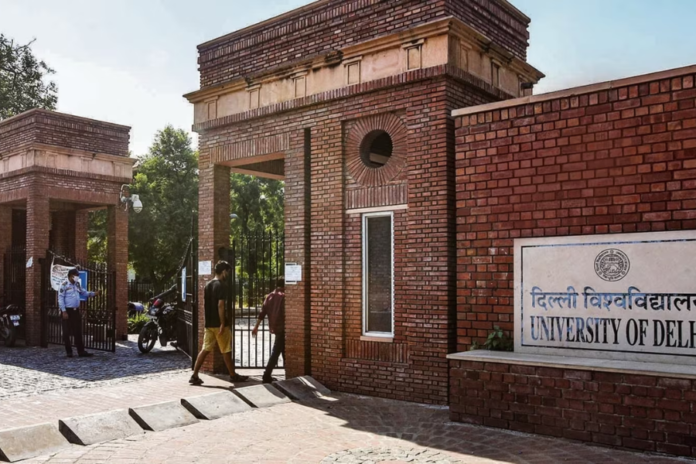In recent months, the Delhi University (DU) has revised its undergraduate history curriculum in accordance with the National Education Policy (NEP) 2020.
A article on inequality was withdrawn, references to “Brahmanization” were eliminated, and matriarchal perspectives were added to units dealing with patriarchy, among other adjustments.
The revised History syllabus for the fourth and fifth semesters of the new four-year undergraduate programme (FYUP) was accepted by the Academic Council (AC), the university’s top decision-making body on academic affairs, on May 26.
The Executive Council (EC) later approved these amendments on June 9.
The old and new history curricula for the fourth and fifth semesters reportedly have some observable changes.
One of the adjustments is the elimination of the phrase “Brahmanization” from the fourth-semester GE course “Religion and Religiosity.”
‘Approaches to Brahmanisation in the early mediaeval age’ was a section of the title, which has now been renamed to ‘Religious Traditions in the Indian Subcontinent’.
Instead of “Brahmanaisation,” the component now comprises “shaiva,” “shakta,” and “vaishnava”.
Approaches to Shaiva, Shakta, and Vaishnava in the early mediaeval age is the new title.
In a similar spirit, the word “Brahmanical” has been removed from the unit title of the paper on women in Indian history from the fifth semester.
It now says “Evolution of Patriarchy in Early India,” as opposed to “Evolution of Patriarchy with Focus on Brahmanical Patriarchy.”
The General Elective (GE) courses are needed for students pursuing the BA (Honours), BA Programme, BCom (Honours), and BSc (Honours) degrees. A variety of GEs, including the ones described above, are available through the history department.
The latest alteration was made, according to a history teacher, for the following reason: “The phrases (‘Brahmanisation’ and ‘Brahmanical’) were not something they (the university) wanted.
They believe that these are terms that cannot be used in historical study. As a result, it has been altered to be more descriptive.
The fourth semester “Inequality and Difference” course, which has been offered for more than five years, has been discontinued.
This course explored the historical development of the ideas of varna, jati, class, caste, and gender.
Additionally, it provided a critical analysis of the political mobilisation that results from concerns about social fairness and inequality in democratic societies.
The Standing Committee on Academic Matters meeting in May was attended by department instructors who opposed the decision to withdraw the course, according to information obtained by The Indian Express.
The Academic Council did, however, authorise the course’s withdrawal on May 26.
In the units that initially concentrated on patriarchy as part of the course “Women in Indian History,” new viewpoints on matriarchy have been introduced.
Matriarchy was included to acknowledge the presence of societal structures other than patriarchy, according to a history professor who asked to remain anonymous. Matriarchy was thus decided to be covered in the course.
The fifth semester’s Discipline Specific Elective (DSE), “Gender in Indian History up to 1500 CE,” has also undergone changes.
For students majoring in BA (Honours) History, a DSE is an elective course. Understanding structures of patriarchy, patrilocality, patriliny, and matriarchy, as well as matrilocality and matriliny, have been added to one of this elective’s previously concentrated sections on “Understanding origins and structures of patriarchy.”
The Academic Council meeting on May 26 accepted the adjustments to the curriculum.
The goal of these adjustments, according to Ratna Bali, the Dean of Academic Activities and a special invitee to the meeting, was to give students a variety of viewpoints.
The curriculum has also undergone a number of other adjustments.
One of these adjustments is the discontinuation of the fourth semester’s “Indian Art and Architecture” Skill Enhancement Course.
In addition to covering topics like the Jama Masjid, Humayun’s tomb, stupa and monastery architecture, Brihadeshwara and Khajuraho temple complex, and other major buildings, this course utilised to give students an insight of how Indian art is seen in the West.
The rationale for withdrawing this course, according to the history instructors, was that it did not meet the requirements to be classified as a ‘skill course’.
Schools open, and ATM and bank facilities will be available for 5 hours in Nuh



